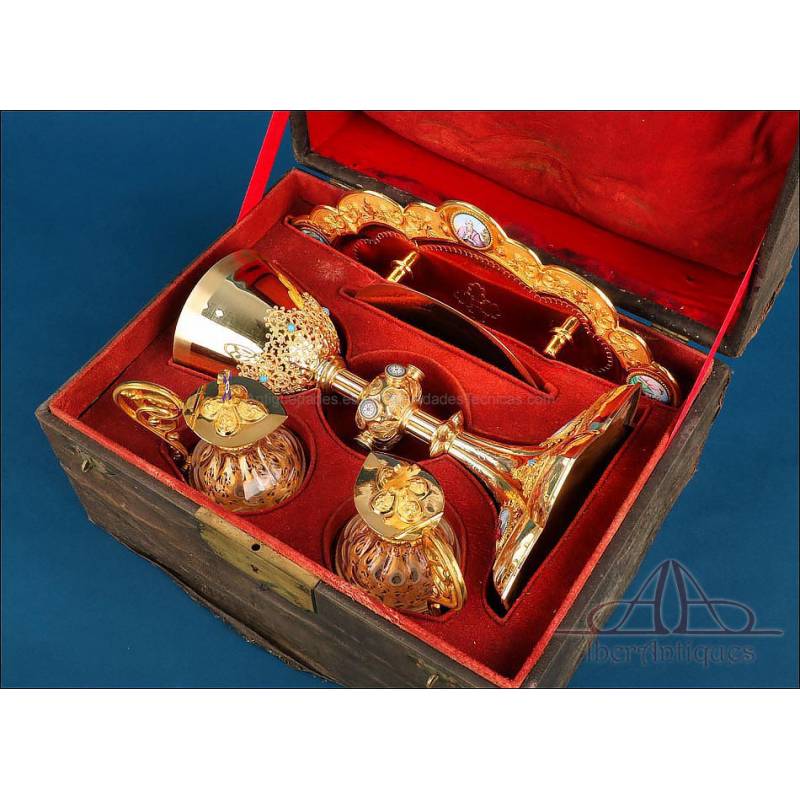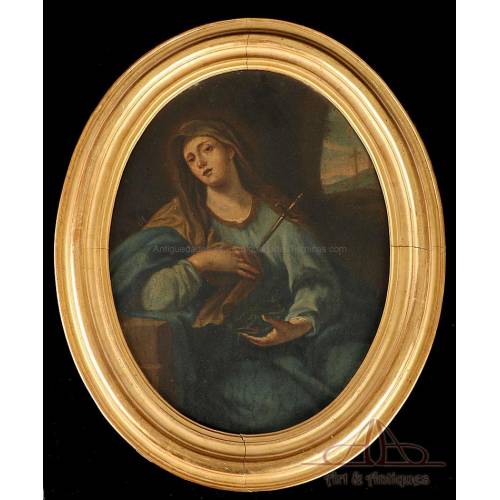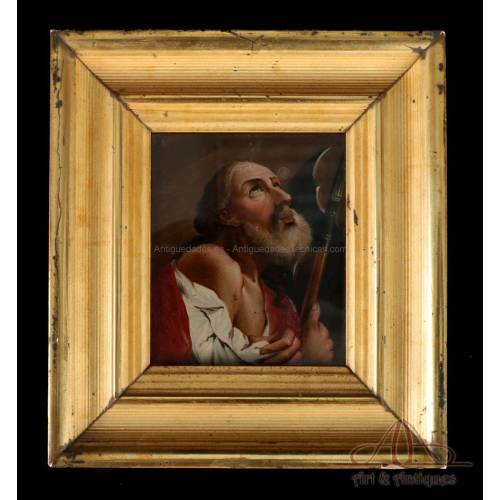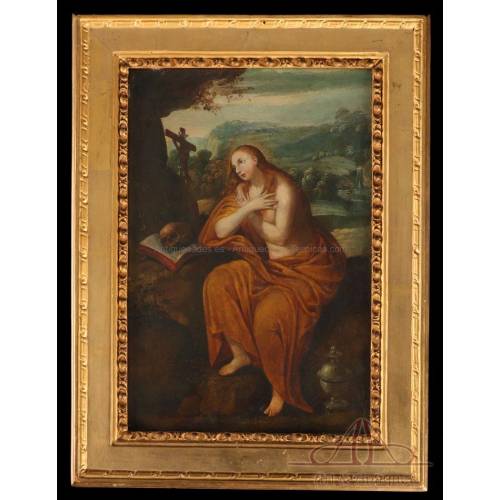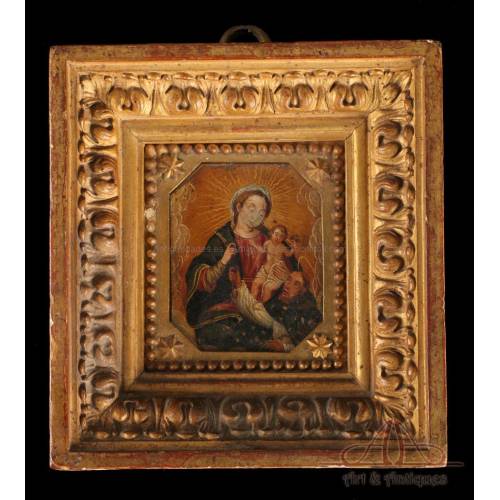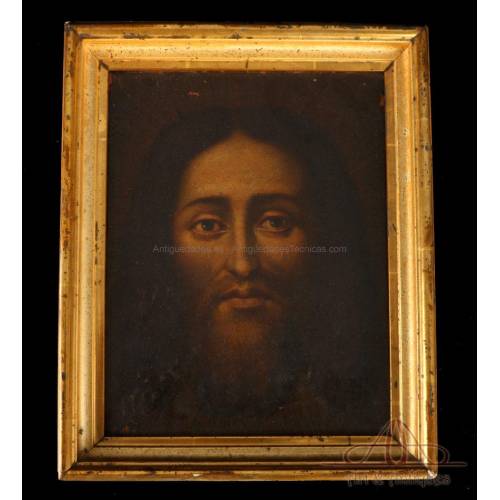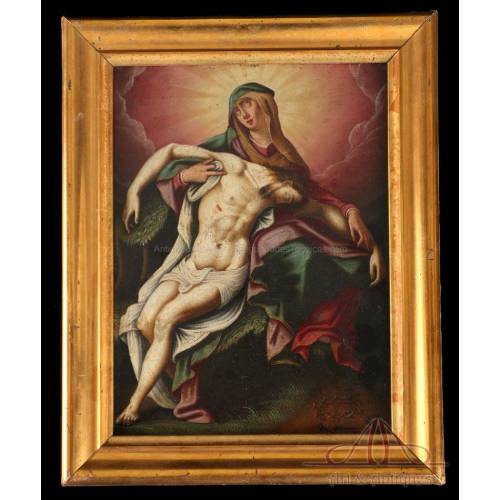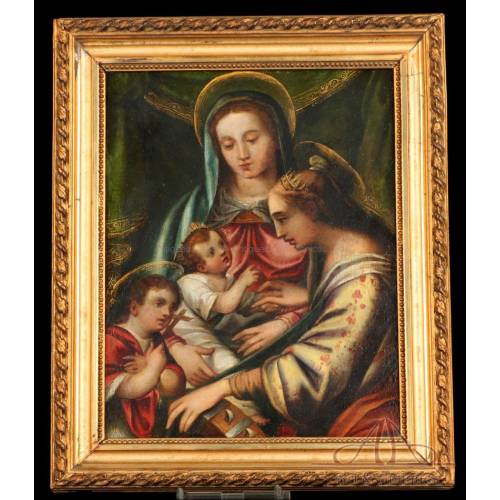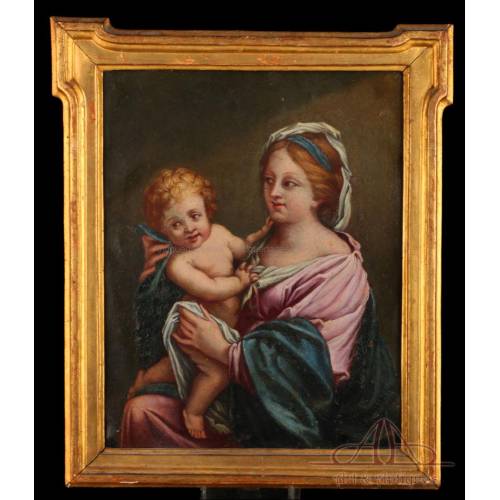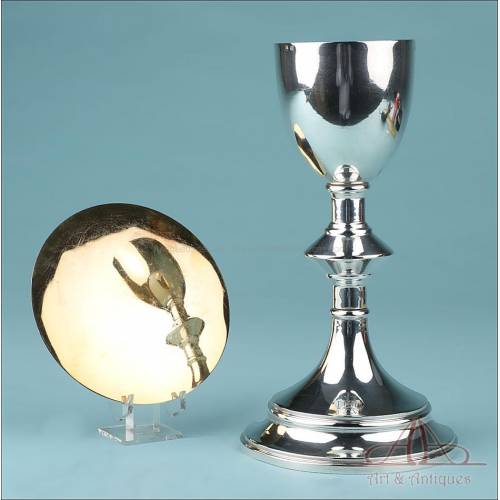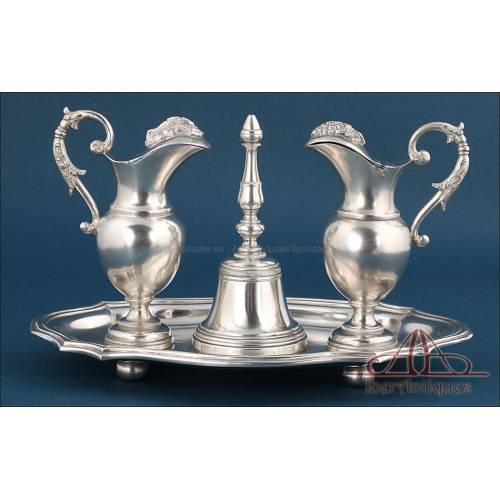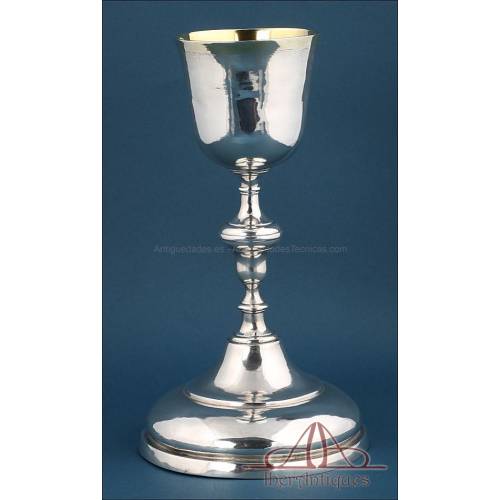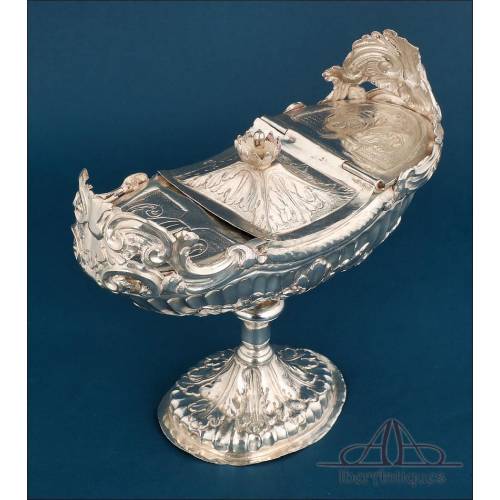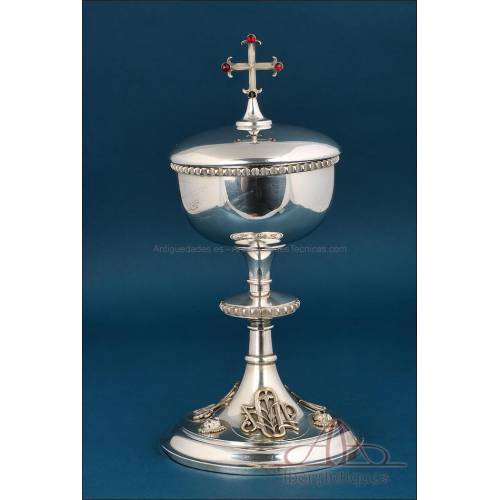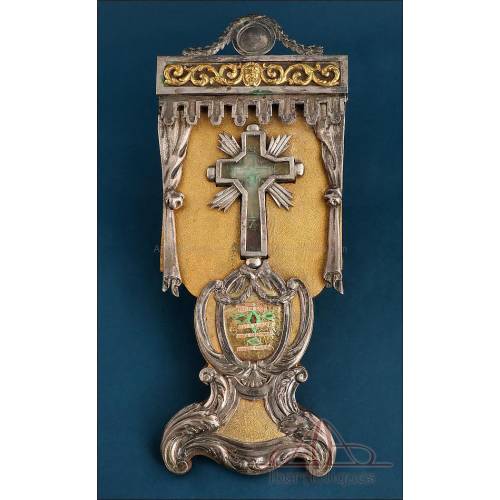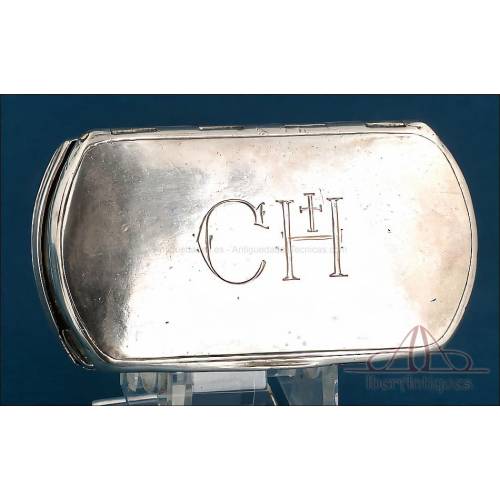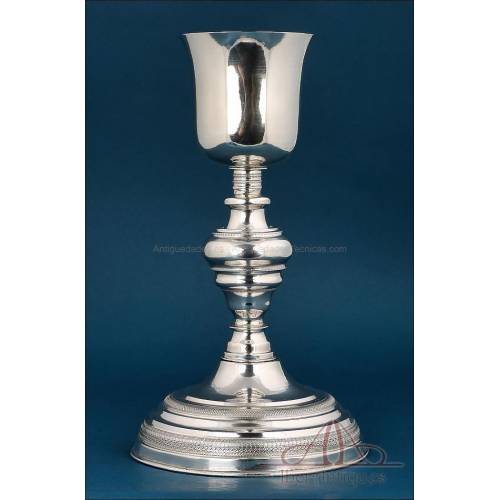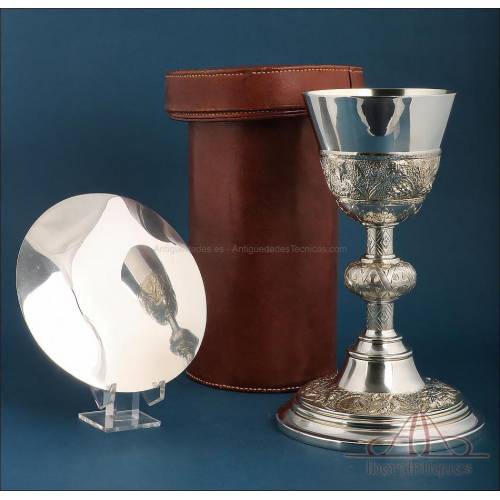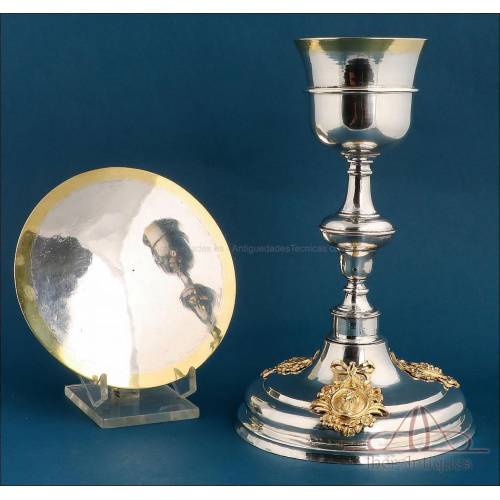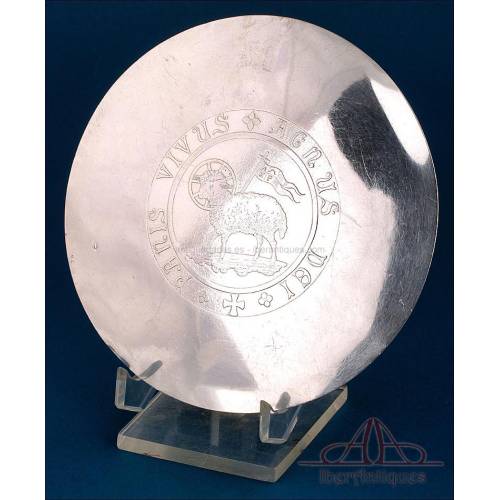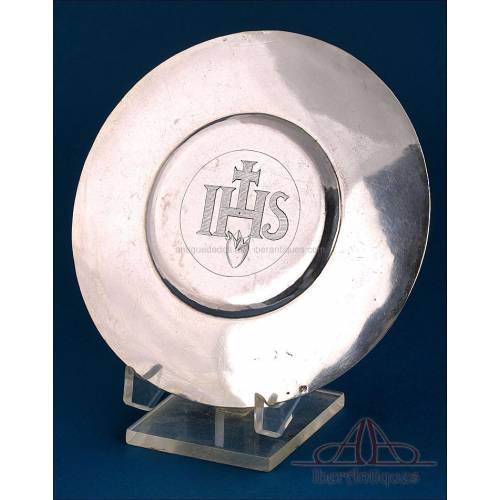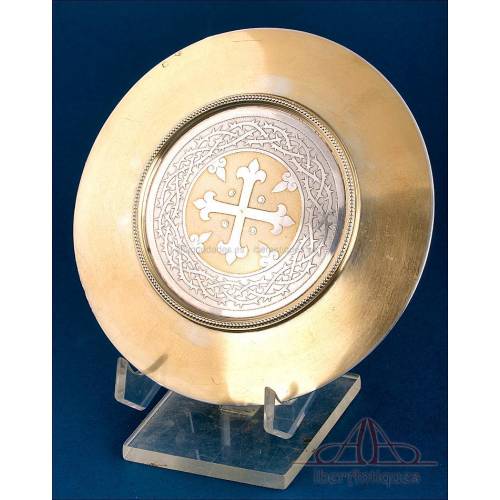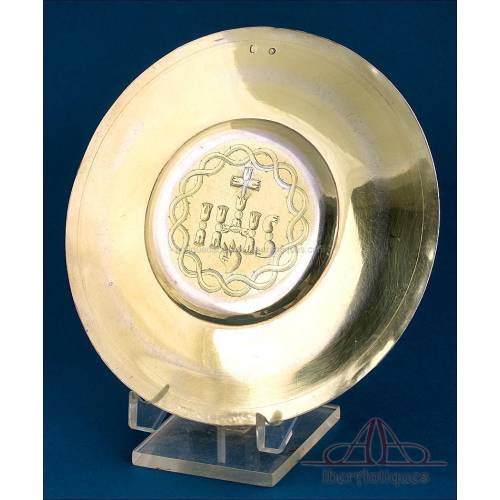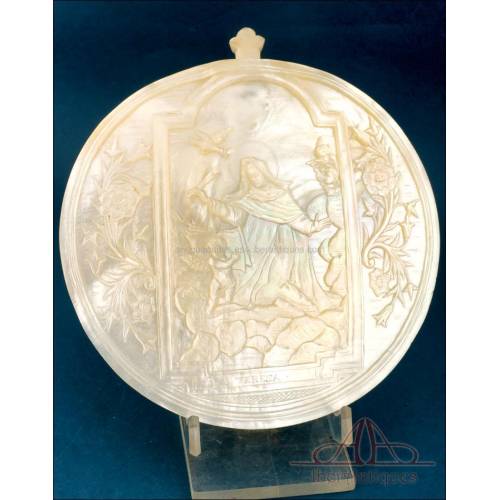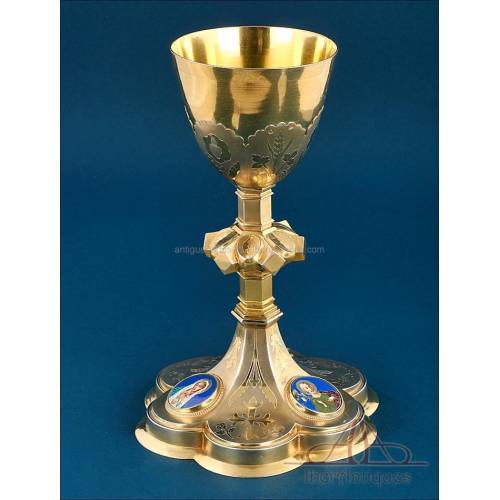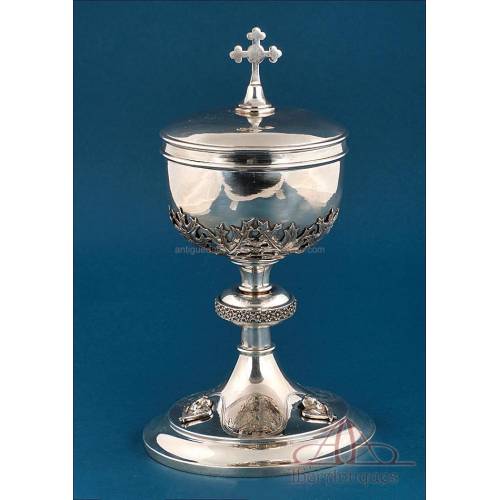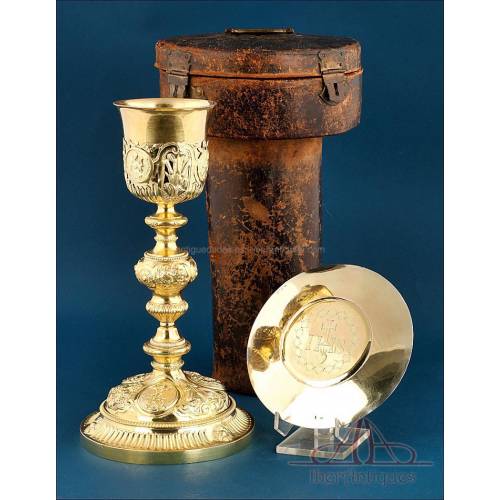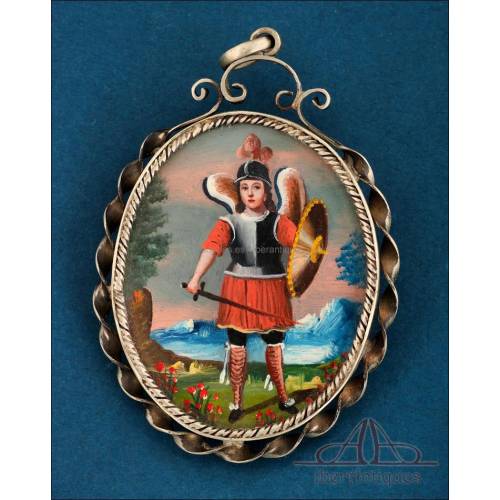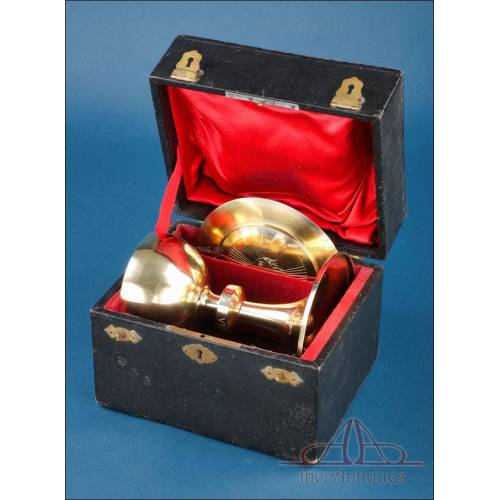E-175
Extraordinary Antique Set of Chalice and Cruets. Gilt Silver and Enamels. France, ca. 1880.
Magnificent set of gilded silver chalice and cruets with enamels and turquoise, made around 1880, in perfect condition.
Sold!
Extraordinary Antique Set of Chalice and Cruets. Gilt Silver and Enamels. France, circa 1880.
This magnificent set of chalice and cruets, made around 1880, is a true gem for any collector or enthusiast of antique religious items. The chalice is crafted from gilded silver, adorned with exquisite filigree, vibrant enamels, and cabochon turquoise, reflecting exceptional craftsmanship of the period. At the base of the chalice are delicate enamels depicting Jesus, Joseph, and Mary, all in perfect condition, with vibrant colors that stand out with surprising vitality. Additionally, an enameled cross is located at the base, surrounded by silver filigree details with cabochon turquoise, complementing the engraved decoration that adds a touch of elegance.
The node of the chalice is adorned with enamels and intricate vegetal decoration, while the cup features more silver filigree and turquoise, continuing with the same level of detail and beauty. This chalice, in addition to its visual splendor, bears hallmarks on the cup and base, with an inscription on the bottom that reads "Régis Bougal, February 2, 1885," possibly the name of the former owner and his ordination date, adding historical and sentimental value to the piece.
The paten, also made of gilded silver, shares the same hallmarks as the chalice. At its center, the Lamb of God is engraved, along with the Latin inscription "Panis Vivus. Agnus Dei," adding deep spiritual significance to the set. This carefully engraved detail highlights the devotion and importance of the object in the liturgical context.
The cruets, also in pristine condition, are presumably made of gilded metal and do not bear hallmarks. However, their splendor is not diminished, featuring enameled crosses in red and blue to differentiate water from wine. The accompanying tray is decorated with enamels of the four evangelists: St. John, St. Matthew, St. Mark, and St. Luke, each represented with their respective symbols, all in perfect condition.
This set is truly rare and exceptional, especially in such impeccable condition. Its original case adds an additional layer of authenticity and preservation, making it an invaluable piece for collectors and for use in religious ceremonies. The like-new condition of this set suggests it has been carefully stored and protected, which is rare to find in items of this age. The quality of the enamels, as well as the intact luster of the gilded silver, reflect the excellence in the preservation of this piece.
Moreover, the inclusion of such detailed inscriptions and decorations not only enhances the aesthetic beauty of the set but also provides significant historical context. The inscription "Régis Bougal, February 2, 1885" offers a personal connection to the past, allowing us to imagine the religious ceremonies in which this chalice was used and the respect with which it was treated over the years. These personal details and the exceptional preservation make this set a standout addition to any collection of sacred art.
The attention to detail in each component of this set is impressive. The enamels, which have retained their vividness and clarity, are a testament to the skill of the artisans of the time and the durability of the techniques employed. The filigree and cabochon turquoise on the chalice are particularly notable, adding a touch of luxury and distinction that would be appreciated both in the past and present.
For any collector or institution that values history and craftsmanship, this chalice and cruets set represents a unique opportunity. It is not only an object of religious devotion but also a work of art that encapsulates the history and spirituality of the era in which it was created. Acquiring this set means acquiring a piece of history, a tangible connection to the past, and an example of late 19th-century craftsmanship at its finest.
This particular set, created around 1880, is an excellent example of the craftsmanship and dedication employed in the creation of liturgical objects. The inscription "Régis Bougal, February 2, 1885" suggests the chalice was a special gift, possibly for Bougal's ordination, adding a personal and touching element to the piece. The enamels depicting the saints and evangelists highlight the spiritual richness and significance of these objects, which have been carefully preserved over the years.
This set of chalice and cruets reflects the richness of liturgical tradition and sacred art, symbolizing not only religious devotion but also the cultural heritage of a past era. The combination of precious materials and skilled craftsmanship makes this set a unique and valuable piece, worthy of being displayed in high-level collections or used in current liturgical ceremonies, keeping alive the tradition and history it represents.
Do not miss this unique opportunity to own a historical and exquisite piece that will undoubtedly be a gem in any collection or religious ceremony!
Dimensions: Chalice: 26.2 cm (10.31 in) height, cup diameter 9.6 cm (3.78 in), base diameter 16.3 cm (6.42 in). Paten: 14.5 cm (5.71 in) diameter. Cruets: 16 cm (6.3 in) height. Tray: 29.5 cm (11.61 in) length, 18.5 cm (7.28 in) width. Total Weight: 646 grams.
History of the Chalice and Cruets
The history of the chalice and cruets dates back to the Middle Ages when these objects began to be used in liturgical ceremonies. The chalice, essentially a sacred cup, is used to hold wine during the Eucharist, while the paten holds the consecrated bread. These objects were often crafted from precious metals and adorned with precious stones and enamels, reflecting the importance of religious rites and the devotion of the artisans. The cruets, which contain the water and wine used in the Mass, also became objects of sacred art, decorated with religious symbolism.

